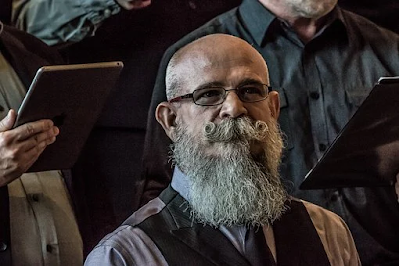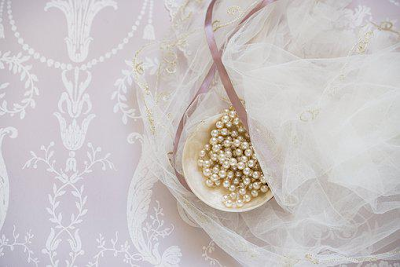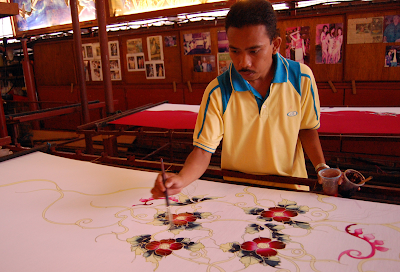Featured
- Get link
- X
- Other Apps
Barbers
The name "barber" comes from the Latin barba, which means "beard," and barbering has been a vocation since the beginning of written history.
For example, "the son of man" is commanded to "take thee a barber's razor and cause it to pass upon thy head and upon thy beard" in Ezekiel 5:1.
Over the years, the barber's position in society has altered significantly.
The medieval barber was a "barber-surgeon" who performed minor surgery, including phlebotomy or bleeding, as well as dental work and hair clipping in addition to shaving and cutting hair.
In Europe, guilds for barber-surgeons were established as early as the eleventh century.
One of the most famous of these, the Worshipful Company of Barbers, was founded in London in 1308.
In the seventeenth century, barber-surgeons could be identified by their distinctive attire, a "checque parti-colored apron; neither can he be dubbed a barber, poler, or shaver till the apron is around him" (Randle Holme, 1688; in Stevens-Cox, p. 220).
The instruments of the craft were kept in the apron's sizable front pocket.
By the turn of the twentieth century, a white or gray coat had taken the place of this customary attire.
A standard sign, a pole with blue, red, and white stripes, delineated the barber's business area.
The pole that was held while bleeding when the vein in the bend of the elbow was opened is where this symbol originated.
This procedure was frequently painful because it was done without anesthesia.
The pole served as a sign of service outside the barbershop while not in use, and the design was incorporated into the recognizable sign that emerged.
The sign's red, blue, and white colors stood in for the vein and artery blood, respectively, and the bandages used to stop bleeding.
A surge in commerce resulted from the smooth-shaven face trend of the seventeenth century.
Using a hog bristle brush and a solution of soap and water, oil, or fat, the barber would first soften the client's hair before shaving him with a well stropped razor.
With the intricacy of men's hairstyles rising in the late eighteenth century and the acceptance of beards in the nineteenth century, demand for barbers' services persisted.
However, due to the separation of the barber and surgeon industries in 1745, barbers' status had already decreased by this point.
Barbering started to be seen as a menial profession as surgery rose to prominence (as had been true all along in many other cultures).
The barbershop of the nineteenth century had a reputation as an unsavory location, a hangout for idle and even boisterous men.
By the middle of the 20th century, contraceptives were also in high demand in Europe, giving rise to the well-known English expression "A little something for the weekend, Sir?" Additionally, barbering was seen to be unsanitary.
Infected razors and heated towels carried from client to client without being cleansed in the nineteenth century might give a client a "bad shave," resulting in diseases known as "barbers' itch." The average barber is sweaty and oily, with chubby fingers and mourning-worthy nails.
He snips and snips away, squeezing your ears, nibbling your eyelashes, and snapping your jaw.
Before you can comprehend his terrifying goal, he spreads axle oil, which is perfumed with musk and age, all over your head (Hairdressers' Weekly Journal, p. 73).
In 1882, the British trade journal Hairdressers' Weekly Journal used this term to launch a systematic campaign advocating for higher education and hygiene standards among barbers in an effort to boost their standing and reputation.
In the latter half of the eighteenth century, black barbers in America began to open businesses that catered to white customers.
These successful black barbers often rose to positions of leadership in their neighborhoods.
After the Civil War, however, racial segregation laws in many states made it illegal for black barbers to treat white clients, which led to a drop in the popularity of barbering as an African American vocation.
Italian males formed nearly 60% of immigrant barbers by 1899–1900.
Haircutting was recognized as a skilled and dexterous profession in Italy, Spain, and France.
The Barber of Seville in Spain and Sweeney Todd, the demon-barber of Fleet Street in England presented a startling difference in terms of popular perception.
The barbershop's function was altered by the self-shaving trend.
The first safety razor with a wooden guard along the blade was created by Jean Jacques Perret in 1770, but the Gillette safety razor, which was created in 1895, is credited with sparking the modern self-shaving revolution.
Barbershops increasingly focused on haircutting rather than shaving as the foundation of their business during the 20th century.
By the 1920s, some bold women were willing to have their hair cut in the macho environment of the barbershop.
One of these women said, "We were really aware as we walked past the barbershop that we were somehow intruding into his territory.
There were several groups of guys smoking tobacco in the barbershop, talking about the weather, politics, rodeo, and wrestling (Willett, p. 1).
The popularity of short haircuts reached such a high level that the few hairdressers who could really cut rather than style hair were completely booked.
In any event, many ladies chose to trust the barber's expertise with their hair rather than a hairdresser's.
With the help of formal education and the creation of luxurious salons where female clientele could be pampered, women's hairdressers swiftly fought back.
Men started spending more time and money at barbers when elaborate haircuts became popular in the 1950s, particularly versions of the pompadour.
Barbers started referring to themselves as "men's stylists" to set themselves apart from traditional barbershops.
By the late 1960s, men's longer hairstyles, which had sprung from counterculture fashions, meant less and less trips to the barbershop.
According to census data in the US, the number of barbershops decreased by more than 28% between 1972 and 1982.
As a result, tonsorial techniques and marketing had to evolve.
By 1970, male grooming expert and writer Rodney Bennett-England said that the "old barber, educated in the use of electric clippers, was a technician." The barbers of today are stylists and even artists (p. 104).
Men's salons that "resemble gentlemen's clubs with deep, comfortable armchairs, wood paneled walls, and pictures or prints...you can easily while away a complete half-day having your hair heightened, lightened, and brightened, your hands manicured, and your tired face cleansed and patted back into new vigor" are how he described them (p. 105).
By the early 2000s, the traditional barbershop was still open but had a diminishing clientele.
However, many men interested in trendy haircuts now visit "unisex" hairdressers who no longer bother to specialize in either male or female customers.
Find Jai on Twitter | LinkedIn | Instagram
See also:
Hair Accessories; Hairdressers; Hairstyles.
References And Further Reading:
Bennett-England, Rodney. As Young as You Look: Male Grooming and Rejuvenation. London: Peter Owen, 1970.
Byrd, Ayana D., and Lori L. Tharps. Hair Story: Untangling the Roots of Black Hair in America. New York: St. Martin’s Press, 2001.
Cox, Caroline. Good Hair Days: A History of British Hairstyling. London: Quartet Books, 1999.
Hairdressers’ Weekly Journal 3 (June 1882): 73.
Stevens-Cox, James. An Illustrated Dictionary of Hairdressing and Wigmaking. London: B. T. Batsford Ltd., 1989.
Willett, Julie A. Permanent Waves: The Making of the American Beauty Shop. New York: New York University Press, 2000.
- Get link
- X
- Other Apps











